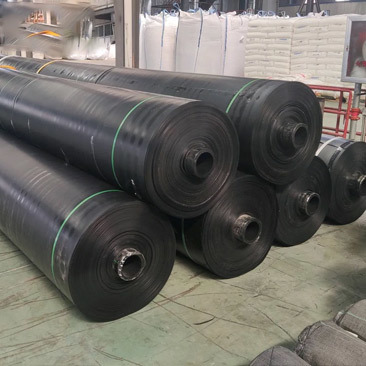Transforming Soil Stability: The Role of Basalt Geogrid in Construction and Landscaping
Release time:
2025-09-11
Transforming Soil Stability: The Role of Basalt Geogrid Table of Contents Introduction to Basalt Geogrid What is Basalt Geogrid? Benefits of Using Basalt Geogrid Applications of Basalt Geogrid in Construction Impact on Soil Stability and Structural Integrity Installation Process of Basalt Geogrid Real-World Case Studies: Success with Basalt Geogrid Frequently Asked
Transforming Soil Stability: The Role of Basalt Geogrid
Table of Contents
- Introduction to Basalt Geogrid
- What is Basalt Geogrid?
- Benefits of Using Basalt Geogrid
- Applications of Basalt Geogrid in Construction
- Impact on Soil Stability and Structural Integrity
- Installation Process of Basalt Geogrid
- Real-World Case Studies: Success with Basalt Geogrid
- Frequently Asked Questions
- Conclusion
Introduction to Basalt Geogrid
In the realm of construction and landscaping, soil stability is paramount. It is the foundation that supports everything above it, from buildings to roadways. **Basalt geogrid** is emerging as a revolutionary material in improving soil stability, offering a range of advantages over traditional reinforcement methods. With its unique properties derived from basalt rock, this geogrid is shaping the future of soil reinforcement.
What is Basalt Geogrid?
Basalt geogrid is a geosynthetic material made from basalt fibers, which are known for their high tensile strength, thermal stability, and resistance to chemical degradation. This innovative product is designed to reinforce soil and enhance stability in various applications. Unlike traditional plastic geogrids, basalt geogrids offer superior performance thanks to their natural composition, which provides excellent resistance to environmental factors.
Composition and Properties of Basalt Geogrid
The composition of basalt geogrids includes fibers made from volcanic rock, resulting in a durable and eco-friendly product. Key properties of basalt geogrid include:
- **High tensile strength:** Provides exceptional support to the soil.
- **Chemical resistance:** Does not degrade in the presence of chemicals, making it ideal for various environments.
- **Thermal stability:** Performs well under high-temperature conditions, ensuring long-lasting performance.
Benefits of Using Basalt Geogrid
Utilizing basalt geogrids in construction offers numerous advantages that contribute to soil stability and project efficiency.
Enhanced Soil Reinforcement
Basalt geogrids effectively distribute loads across a wider area, reducing localized stress on the soil. This load distribution minimizes the risk of soil failure, settling, or erosion, leading to a more stable foundation.
Environmental Benefits
Basalt geogrids are made from natural materials, making them an environmentally friendly choice. Their production has a lower carbon footprint compared to synthetic alternatives, contributing to sustainable construction practices.
Cost-Effectiveness
While the initial investment in basalt geogrids may be higher than traditional materials, the long-term benefits far outweigh the costs. Increased durability and reduced maintenance needs translate to significant savings over time.
Versatility in Applications
Basalt geogrids can be used in various settings, including roads, retaining walls, and pavements. Their adaptability makes them suitable for numerous construction and landscaping projects.
Applications of Basalt Geogrid in Construction
The versatility of basalt geogrid allows for its application in multiple areas of construction and landscaping.
Road Construction
In road construction, basalt geogrids are used to reinforce subgrade materials, improving load-bearing capacity and extending the lifespan of the pavement. This results in fewer repairs and lower maintenance costs.
Retaining Walls
For retaining walls, basalt geogrids provide the necessary support to retain soil and prevent erosion. Their high tensile strength ensures that the walls remain stable under varying conditions.
Landscaping Projects
In landscaping, basalt geogrids can be utilized to create stable bases for pathways, patios, and other features. Their ability to enhance soil stability reduces the risk of settling and improves the overall aesthetics of the project.
Impact on Soil Stability and Structural Integrity
Soil stability is crucial for structural integrity. The use of basalt geogrids ensures that the soil remains stable even under heavy loads. By enhancing the load distribution and mitigating erosion, these geogrids play a vital role in maintaining the structural integrity of various projects.
Long-Term Performance
The durability and resistance to environmental factors mean that projects utilizing basalt geogrids experience fewer issues over time. This long-term performance is essential for maintaining safety and reducing the risk of structural failures.
Installation Process of Basalt Geogrid
Proper installation is key to maximizing the benefits of basalt geogrids. The installation process typically involves several key steps:
Site Preparation
Before installation, the site must be prepared by removing any debris, vegetation, and loose soil that could interfere with the placement of the geogrid.
Placement of Geogrid
The basalt geogrid is rolled out across the prepared soil. Care must be taken to ensure that the grid is laid flat and free of wrinkles or folds, which can compromise its effectiveness.
Backfilling
Once the geogrid is in place, backfilling with appropriate soil materials is necessary. The backfill should be compacted to ensure maximum stability.
Final Compaction
After the backfilling process, the area must be compacted thoroughly to ensure that the geogrid effectively reinforces the soil.
Real-World Case Studies: Success with Basalt Geogrid
Several projects have successfully implemented basalt geogrids, showcasing their effectiveness in improving soil stability.
Case Study 1: Highway Reinforcement Project
A highway project in a high-traffic area utilized basalt geogrids to reinforce the subgrade. The outcome was a significant reduction in pavement distress and maintenance costs over the years.
Case Study 2: Retaining Wall Construction
A retaining wall project in a hillside region incorporated basalt geogrids, leading to enhanced stability and minimal erosion. The project successfully prevented soil movement during heavy rains.
Frequently Asked Questions
1. What is the lifespan of basalt geogrid?
Basalt geogrids can last for decades, often outlasting traditional geosynthetics due to their superior durability and resistance to environmental factors.
2. Can basalt geogrids be used in wet conditions?
Yes, basalt geogrids perform well in wet conditions, providing enhanced stability even in saturated soils.
3. Are basalt geogrids environmentally friendly?
Absolutely, basalt geogrids are made from natural materials and have a lower carbon footprint compared to synthetic alternatives.
4. How do basalt geogrids compare to plastic geogrids?
Basalt geogrids offer superior tensile strength, chemical resistance, and thermal stability compared to conventional plastic geogrids.
5. What types of projects benefit most from basalt geogrids?
Projects involving roads, retaining walls, and landscaping applications can significantly benefit from the use of basalt geogrids.
Conclusion
In summary, basalt geogrid is a transformative solution for enhancing soil stability in construction and landscaping projects. Its unique properties, environmental benefits, and versatility make it an ideal choice for modern construction practices. As the industry continues to evolve, incorporating basalt geogrids will not only improve the integrity of structures but also contribute to sustainable development. For those looking to ensure the longevity and stability of their projects, basalt geogrids are undoubtedly a game-changer.






